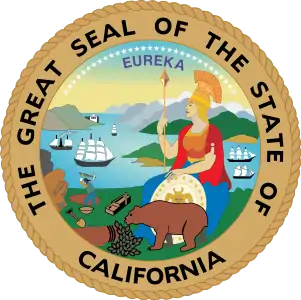Los Angeles County, California
Los Angeles County, officially the County of Los Angeles,[8] is the most populous county in the United States and in the U.S. state of California,[9] with more than ten million inhabitants as of 2018.[10] It is the largest non–state-level government entity in the United States. Its population is greater than that of 41 individual U.S. states. It has the third-largest metropolitan economy in the world, with a Nominal GDP of more than $700 billion.[11] It has 88 incorporated cities and many unincorporated areas and, at 4,083 square miles (10,570 km2), it is larger than the combined areas of Delaware and Rhode Island. The county is home to more than one-quarter of California residents and is one of the most ethnically diverse counties in the United States.[12] Its county seat, Los Angeles, is also California's most populous city and the second most populous city in the United States, with about four million residents.
Los Angeles County | |
|---|---|
| County of Los Angeles | |
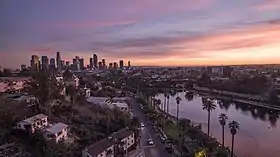  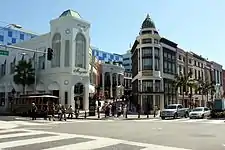 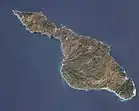 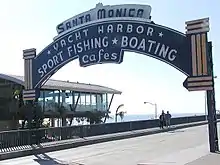 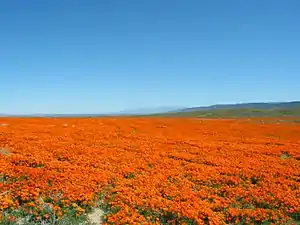 _(cropped).jpg.webp) Images, from top down, left to right: Downtown Los Angeles in June 2019; Venice, Los Angeles during sunset; Rodeo Drive in Beverly Hills; satellite picture of Santa Catalina Island; the Santa Monica Pier; Antelope Valley California Poppy Reserve; and the Hollywood Sign | |
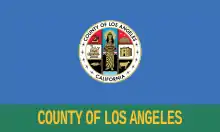 Flag | |
| Nickname(s): "L.A. County" | |
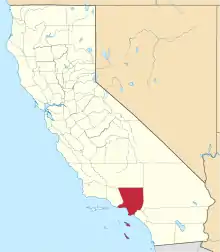 Location of the county in California | |
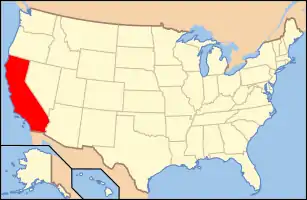 California's location in the United States | |
| Coordinates: 34°3′N 118°15′W | |
| Country | |
| State | |
| Region | Southern California |
| Metro area | Greater Los Angeles |
| Formed | February 18, 1850[1] |
| Named for | The City of Los Angeles, which was named for Our Lady, Queen of the Angels |
| County seat | Los Angeles |
| Largest city | Los Angeles |
| Incorporated cities | 88 |
| Government | |
| • Type | Council–manager |
| • Body | Board of Supervisors |
| • Board of Supervisors[2] | Supervisors
|
| • Chief executive officer | Fesia Davenport |
| Area | |
| • Total | 4,751 sq mi (12,310 km2) |
| • Land | 4,058 sq mi (10,510 km2) |
| • Water | 693 sq mi (1,790 km2) |
| Highest elevation | 10,068 ft (3,069 m) |
| Lowest elevation | 0 ft (0 m) |
| Population | |
| • Total | 9,818,605 |
| • Estimate (2019)[5] | 10,039,107 |
| • Density | 2,100/sq mi (800/km2) |
| Time zone | UTC−8 (Pacific Time Zone) |
| • Summer (DST) | UTC−7 (Pacific Daylight Time) |
| ZIP Codes | 90xxx–918xx, 92397, 92821, 92823, 93243, 935xx[6] |
| Area codes | 213/323, 310/424, 442/760, 562, 626, 657/714, 661, 747/818, 840/909 |
| FIPS code | 06-037 |
| GNIS feature ID | 277283 |
| GDP | $727 billion[7] · 1st |
| Website | www |
History

Los Angeles County is one of the original counties of California, created at the time of statehood in 1850.[13] The county originally included parts of what are now Kern, San Bernardino, Riverside, Inyo, Tulare, Ventura, and Orange counties. In 1851 and 1852, Los Angeles County stretched from the coast to the state line of Nevada.[14] As the population increased, sections were split off to organize San Bernardino County in 1853, Kern County in 1866, and Orange County in 1889.
Prior to the 1870s, Los Angeles County was divided into townships, many of which were amalgamations of one or more old ranchos. They were:
- Azusa (encompassed the foothill communities east of the San Gabriel River, including present-day Covina and Duarte)
- El Monte (encompassed communities in the Whittier Narrows area, including present-day El Monte, La Puente and Monterey Park)
- Azusa and El Monte Townships were merged for the 1870 census.
- City of Los Angeles (then consisting solely of its four-league Spanish land grant)
- Los Angeles Township (consisted of areas surrounding the City of Los Angeles, including the San Fernando Valley and present-day West Los Angeles and East Los Angeles. Most of this area has now been annexed to the city of Los Angeles.)
- Los Nietos (consisted of areas south of the Whittier Narrows and Puente Hills south to present-day Long Beach, centered on the early settlement at Los Nietos. Some of this area is now in Orange County.)
- San Jose (consisted of the eastern portions of the county drained by San Jose Creek, including what is now the cities of Pomona, Claremont and Walnut)
- San Gabriel (consisted of the western San Gabriel Valley and foothill communities, including present-day Alhambra and Pasadena. Centered on the Mission San Gabriel)
- Santa Ana (consisted of what is now northern and central Orange County, including what is now Fullerton, Huntington Beach and City of Orange. Centered on Santa Ana).
- For the 1870 census, Anaheim district was enumerated separately.[15][16]
- San Juan (consisted of what is now southern Orange County. Centered on Mission San Juan Capistrano).
- San Pedro (consisted of the present-day South Bay communities, Compton and western Long Beach. Centered on the wharf of San Pedro. Renamed Wilmington Township by 1870).
- Tejon (consisted of all of northern Los Angeles County and what is now southern Kern County. Centered on Fort Tejon)
- When Kern County was formed, the portion of the township remaining in Los Angeles County became Soledad Township[17]
Geography
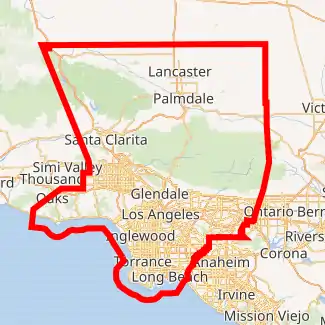
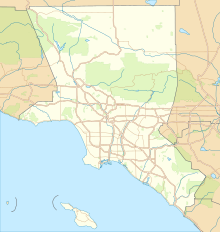
According to the U.S. Census Bureau, the county has an area of 4,751 square miles (12,310 km2), of which 4,058 square miles (10,510 km2) (85%) is land and 693 square miles (1,790 km2) (15%) is water.[18] Los Angeles County borders 70 miles (110 km) of coast on the Pacific Ocean and encompasses mountain ranges, valleys, forests, islands, lakes, rivers, and desert. The Los Angeles River, Rio Hondo, the San Gabriel River and the Santa Clara River flow in Los Angeles County, while the primary mountain ranges are the Santa Monica Mountains and the San Gabriel Mountains. The western extent of the Mojave Desert begins in the Antelope Valley, in the northeastern part of the county.
Most of the population of Los Angeles County is located in the south and southwest, with major population centers in the Los Angeles Basin, San Fernando Valley and San Gabriel Valley. Other population centers are found in the Santa Clarita Valley, Pomona Valley, Crescenta Valley and Antelope Valley.
The county is divided west-to-east by the San Gabriel Mountains, which are part of the Transverse Ranges of southern California, and are contained mostly within the Angeles National Forest. Most of the county's highest peaks are in the San Gabriel Mountains, including Mount San Antonio 10,068 feet (3,069 m)) at the Los Angeles-San Bernardino county lines, Mount Baden-Powell 9,399 feet (2,865 m), Mount Burnham 8,997 feet (2,742 m) and Mount Wilson 5,710 feet (1,740 m). Several lower mountains are in the northern, western, and southwestern parts of the county, including the San Emigdio Mountains, the southernmost part of Tehachapi Mountains and the Sierra Pelona Mountains.
Los Angeles County includes San Clemente Island and Santa Catalina Island, which are part of the Channel Islands archipelago off the Pacific Coast.
Lakes and reservoirs
- Baldwin Lake
- Bouquet Reservoir
- Castaic Lake
- Crystal Lake
- Elizabeth Lake
- Holiday Lake
- Hollywood Reservoir
- Hughes Lake
- Jackson Lake
- Las Virgenes Reservoir
- Malibou Lake
- Morris Reservoir
- Munz Lakes
- Lake Palmdale
- Puddingstone Reservoir
- Pyramid Lake
- Quail Lake
- Silver Lake Reservoir
- Stone Canyon Reservoir
- Tweedy Lake
- Westlake in City of Westlake Village
- Lake Lindero
Major divisions of the county
- East: Eastside, San Gabriel Valley, portions of the Pomona Valley
- West: Westside, Beach Cities
- South: South Bay, South Los Angeles, Palos Verdes Peninsula, Gateway Cities, Los Angeles Harbor Region
- North: San Fernando Valley, Crescenta Valley, portions of the Conejo Valley, portions of the Antelope Valley and Santa Clarita Valley
- Central: Downtown Los Angeles, Mid-Wilshire, Northeast Los Angeles
National protected areas
Demographics
Los Angeles County had a population of 9,818,605 in the 2010 United States Census.[19] This includes a natural increase since the last census of 583,364 people (i.e., 1,152,564 births minus 569,200 deaths) and a decrease due to net migration of 361,895 people. Immigration resulted in a net increase of 293,433 people, and migration from within the United States resulted in a net decrease of 655,328 people.[20]
The racial makeup of Los Angeles County was 4,936,599 (50%) White, 1,346,865 (13.7%) Asian, 856,874 (9%) African American, 72,828 (0.7%) Native American, 26,094 (0.3%) Pacific Islander, 2,140,632 (21.8%) from other races, and 438,713 (4.5%) from two or more races.
Non-Hispanic whites numbered 2,728,321, or 28% of the population.[21] Hispanic or Latino residents of any race numbered 4,687,889 (48%); 36% of Los Angeles County's population was of Mexican ancestry, 3.7% Salvadoran, and 2.2% Guatemalan heritage.[22]
The county has a large population of Asian Americans, being home to the largest numbers of Burmese, Cambodian, Chinese, Filipino, Indian, Indonesian, Korean, Sri Lankan, Taiwanese, and Thai outside their respective countries.[23] The largest Asian groups in Los Angeles County are 4.0% Chinese, 3.3% Filipino, 2.2% Korean, 1.0% Japanese, 0.9% Vietnamese, 0.8% Indian, and 0.3% Cambodian.
| Historical population | |||
|---|---|---|---|
| Census | Pop. | %± | |
| 1850 | 3,530 | — | |
| 1860 | 11,333 | 221.0% | |
| 1870 | 15,309 | 35.1% | |
| 1880 | 33,381 | 118.0% | |
| 1890 | 101,454 | 203.9% | |
| 1900 | 170,298 | 67.9% | |
| 1910 | 504,131 | 196.0% | |
| 1920 | 936,455 | 85.8% | |
| 1930 | 2,208,492 | 135.8% | |
| 1940 | 2,785,643 | 26.1% | |
| 1950 | 4,151,687 | 49.0% | |
| 1960 | 6,038,771 | 45.5% | |
| 1970 | 7,041,980 | 16.6% | |
| 1980 | 7,477,421 | 6.2% | |
| 1990 | 8,863,164 | 18.5% | |
| 2000 | 9,519,338 | 7.4% | |
| 2010 | 9,818,605 | 3.1% | |
| 2019 (est.) | 10,039,107 | [10] | 2.2% |
| U.S. Decennial Census[24] 1790–1960[25] 1900–1990[26] 1990–2000[27] 2010–2018[28] | |||
Race and ancestry
| Population, race, and income (2011) | |||||
|---|---|---|---|---|---|
| Total population[29] | 9,787,747 | ||||
| White[29] | 5,126,367 | 52.4% | |||
| Black or African American[29] | 844,048 | 8.6% | |||
| American Indian or Alaska Native[29] | 49,329 | 0.5% | |||
| Asian[29] | 1,347,782 | 13.8% | |||
| Native Hawaiian or other Pacific Islander[29] | 26,310 | 0.3% | |||
| Some other race[29] | 2,064,759 | 21.1% | |||
| Two or more races[29] | 329,152 | 3.4% | |||
| Hispanic or Latino (of any race)[30] | 4,644,328 | 47.5% | |||
| Per capita income[31] | $27,954 | ||||
| Median household income[32] | $56,266 | ||||
| Median family income[33] | $62,595 | ||||
The racial makeup of the county is 48.7% White,[34] 11.0% African American, 0.8% Native American, 10.0% Asian, 0.3% Pacific Islander, 23.5% from other races, and 4.9% from two or more races. 44.6% of the population are Hispanic or Latino of any race. The largest European-American ancestry groups are German (6%), Irish (5%), English (4%) and Italian (3%). 45.9% of the population reported speaking only English at home; 37.9% spoke Spanish, 2.22% Tagalog, 2.0% Chinese, 1.9% Korean, 1.87% Armenian, 0.5% Arabic, and 0.2% Hindi.[35]
The county has the largest Native American population of any county in the nation: according to the 2000 census, it has more than 153,550 people of indigenous descent, and most are from Latin America.
As estimated by the Public Policy Institute of California in 2008, Los Angeles County is home to more than one-third of California's undocumented immigrants, who make up more than ten percent of the population.[36]
Los Angeles County is home to the largest Armenian population outside of Armenia.[37]
2000
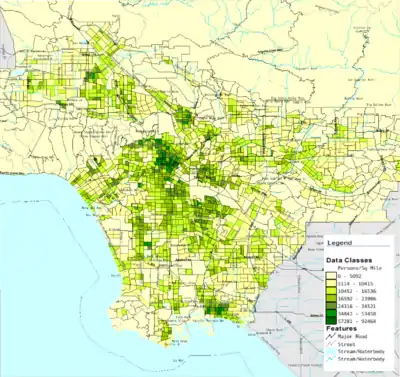
At the 2000 census,[38] there were 9,519,338 people, 3,133,774 households, and 2,137,233 families in the county. The population density was 2,344 people per square mile (905/km2). There were 3,270,909 housing units at an average density of 806 per square mile (311/km2).
Of the 3,133,774 households 37% had children under the age of 18 living with them, 48% were married couples living together, 15% had a female householder with no husband present, and 32% were non-families. 25% of households were one person and 7% were one person aged 65 or older. The average household size was 2.98 and the average family size was 3.61.
The age distribution was 28% under the age of 18, 10% from 18 to 24, 33% from 25 to 44, 19% from 45 to 64, and 10% 65 or older. The median age was 32 years. For every 100 females, there were 97.7 males. For every 100 females age 18 and over, there were 95.0 males.
Income
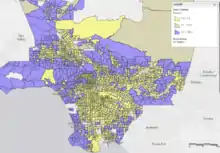
The median personal earnings for all workers 16 and older in Los Angeles County are $30,654, slightly below the US median; earnings, however vary widely by neighborhood, race and ethnicity, and gender.[39] The median household income was $42,189 and the median family income was $46,452. Males had a median income of $36,299 versus $30,981 for females. The per capita income for the county was $20,683. There are 14.4% of families living below the poverty line and 17.9% of the population, including 24.2% of under 18 and 10.5% of those over 64. Los Angeles County has the highest number of millionaires of any county in the nation, totaling 261,081 households as of 2007.[40]
The homeownership rate is 47.9%, and the median value for houses is $409,300. 42.2% of housing units are in multi-unit structures. Los Angeles County has the largest number of homeless people, with "48,000 people living on the streets, including 6,000 veterans.", in 2010.[41] As of 2017 the number of homeless in the county of Los Angeles increased to nearly 58,000.[42]
Religion
In 2015, there were over two thousand Christian churches, the majority of which are Catholic.[43] Roman Catholic adherents number close to 40% of the population. There were 202 Jewish synagogues, 145 Buddhist temples, 48 Muslim mosques, 44 Baháʼí Faith worship centers, 37 Hindu mandirs, 28 Tenrikyo churches and fellowships, 16 Shinto worship centers, and 14 Sikh gurdwaras in the county.[44] The Roman Catholic Archdiocese of Los Angeles has approximately 5 million members and is the largest diocese in the United States. In 2014, the county had 3,275 religious organizations, the most out of all US counties.[45]
Law, government, and politics
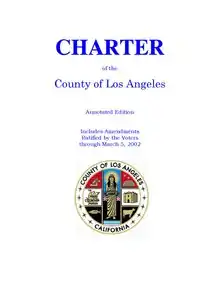
Government
The Government of Los Angeles County is defined and authorized under the California Constitution, California law and the Charter of the County of Los Angeles.[46] Much of the Government of California is in practice the responsibility of local governments such as the Government of Los Angeles County.
The county's voters elect a governing five-member Los Angeles County Board of Supervisors. The small size of the board means each supervisor represents over 2 million people. The board operates in a legislative, executive, and quasi-judicial capacity. As a legislative authority, it can pass ordinances for the unincorporated areas (ordinances that affect the whole county, like posting of restaurant ratings, must be ratified by the individual city). As an executive body, it can tell the county departments what to do, and how to do it. As a quasi-judicial body, the Board is the final venue of appeal in the local planning process, and holds public hearings on various agenda items.
As of 2020, the Board of Supervisors oversees a $35.5 billion annual budget and over 112,000 employees.[47] The county government is managed on a day-to-day basis by a Chief Executive Officer and is organized into many departments, each of which is enormous in comparison to equivalent county-level (and even many state-level) departments anywhere else in the United States. Some of the larger or better-known departments include:
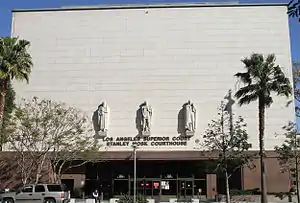
- Los Angeles County Department of Consumer and Business Affairs – offers consumers in the county a variety of services including: consumer and real estate counseling, mediation, and small claims counseling investigates consumer complaints, real estate fraud and identity theft issues. The department also provides small business certifications and helps entrepreneurs navigate the process of opening a business.
- Los Angeles County Department of Children and Family Services – administers foster care
- Los Angeles County Fire Department – provides firefighting services for the unincorporated parts of Los Angeles County, as well as 58 cities.
- Los Angeles County Department of Health Services – operates several county hospitals and a network of primary care clinics,
- Los Angeles County Department of Public Health – administers public health programs including STD programs, smoking cessation, and restaurant inspection. In the majority of the county LACDPH puts letter grades relating to the food cleanliness and safety of a restaurant in the front window of restaurants.
- Los Angeles County Department of Public Social Services – administers many federal and state welfare programs
- Los Angeles County Department of Public Works – operates countywide flood control system, constructs and maintains roads in unincorporated areas
- Los Angeles County District Attorney – prosecutes criminal suspects.
- Los Angeles County Office of the Public Defender – Defends indigent people accused of criminal offenses.
- Los Angeles County Probation Department
- Los Angeles County Sheriff's Department – provides law enforcement services for the unincorporated parts of Los Angeles County, as well as 42 cities.
The Los Angeles County Metropolitan Transportation Authority, despite its name, is not a County department. Technically it is a state-mandated county transportation commission that also operates bus and rail.
Politics
| Year | GOP | DEM | Others |
|---|---|---|---|
| 2020 | 26.8% 1,145,530 | 71.0% 3,028,885 | 2.1% 89,950 |
| 2016 | 22.4% 769,743 | 71.7% 2,464,364 | 5.8% 200,201 |
| 2012 | 27.8% 885,333 | 69.6% 2,216,903 | 2.4% 78,831 |
| 2008 | 28.8% 956,425 | 69.1% 2,295,853 | 1.9% 65,970 |
| 2004 | 35.6% 1,076,225 | 63.1% 1,907,736 | 1.3% 39,319 |
| 2000 | 32.3% 871,930 | 63.4% 1,710,505 | 4.1% 112,719 |
| 1996 | 30.9% 746,544 | 59.3% 1,430,629 | 9.7% 233,841 |
| 1992 | 29.0% 799,607 | 52.5% 1,446,529 | 18.4% 507,267 |
| 1988 | 46.8% 1,239,716 | 51.8% 1,372,352 | 1.2% 32,603 |
| 1984 | 54.5% 1,424,113 | 44.3% 1,158,912 | 1.1% 29,889 |
| 1980 | 50.1% 1,224,533 | 40.1% 979,830 | 9.6% 235,822 |
| 1976 | 47.7% 1,174,926 | 49.6% 1,221,893 | 2.5% 62,258 |
| 1972 | 54.7% 1,549,717 | 42.0% 1,189,977 | 3.2% 90,676 |
| 1968 | 47.6% 1,266,480 | 46.0% 1,223,251 | 6.3% 168,251 |
| 1964 | 42.5% 1,161,067 | 57.4% 1,568,300 | 0.0% 1,551 |
| 1960 | 49.4% 1,302,661 | 50.2% 1,323,818 | 0.3% 8,020 |
| 1956 | 55.3% 1,260,206 | 44.2% 1,007,887 | 0.3% 7,331 |
| 1952 | 56.2% 1,278,407 | 42.7% 971,408 | 1.0% 24,725 |
| 1948 | 46.5% 804,232 | 47.0% 812,690 | 6.4% 112,160 |
| 1944 | 42.6% 666,441 | 56.7% 886,252 | 0.5% 8,871 |
| 1940 | 40.5% 574,266 | 58.1% 822,718 | 1.2% 18,285 |
| 1936 | 31.6% 357,401 | 67.0% 757,351 | 1.3% 15,663 |
| 1932 | 38.5% 373,738 | 57.1% 554,476 | 4.2% 41,380 |
| 1928 | 70.2% 513,526 | 28.7% 209,945 | 1.0% 7,830 |
| 1924 | 65.5% 299,675 | 7.3% 33,554 | 27.1% 124,228 |
| 1920 | 69.1% 178,117 | 21.5% 55,661 | 9.3% 23,992 |
| 1916 | 50.5% 135,554 | 42.5% 114,070 | 6.8% 18,297 |
| 1912 | 1.3% 2,181 | 33.3% 55,110 | 65.3% 108,005 |
| 1908 | 56.7% 41,483 | 30.2% 22,076 | 13.0% 9,518 |
| 1904 | 66.5% 32,507 | 20.5% 10,030 | 12.9% 6,346 |
| 1900 | 55.1% 19,200 | 37.7% 13,158 | 7.1% 2,490 |
| 1896 | 49.6% 16,891 | 47.1% 16,043 | 3.2% 1,108 |
| 1892 | 44.8% 10,226 | 35.6% 8,119 | 19.4% 4,434 |
| 1888 | 54.6% 13,805 | 40.0% 10,110 | 5.3% 1,349 |
| 1884 | 51.6% 5,595 | 43.2% 4,683 | 5.0% 551 |
| 1880 | 47.9% 2,914 | 46.9% 2,853 | 5.1% 316 |
| 1876 | 45.7% 3,042 | 54.3% 3,616 | |
| 1872 | 51.1% 1,312 | 47.8% 1,228 | 1.1% 27 |
| 1868 | 37.7% 748 | 62.3% 1,236 | |
| 1864 | 42.7% 555 | 57.3% 744 | |
| 1860 | 20.3% 356 | 40.0% 703 | 39.7% 697 |
| 1856 | 37.8% 521 | 52.4% 721 | 9.8% 135 |
| 1852 | 46.4% 497 | 53.6% 574 |
Overview
Los Angeles County tends to favor the Democratic Party. Even when California was a state that favored the Republican Party, the county would go for the Democratic nominee. It has voted for the Democratic candidate in every presidential election cycle since 1988. However, it did vote twice for Dwight Eisenhower (1952, 1956), Richard Nixon (1968, 1972), and Ronald Reagan (1980, 1984) the latter two of whom were California politicians. From 1920 to 1984 it was a bellwether county that always voted for the eventual national winner. Since 1984, it has only voted against the national popular vote winner in 1988 and 2004. In 2008 and 2012, sixty percent of the electorate voted for Democrat Barack Obama. In 2016, Democrat Hillary Clinton won 71% of the vote, marking both the largest margin of any Democratic victory in the county as well as the largest percentage of the electorate ever won by a single candidate in the county.
Voter registration
| Population and registered voters | ||
|---|---|---|
| Total population[29] | 9,787,747 | |
| Registered voters[50][note 1] | 4,865,403 | 49.7% |
| Democratic[50] | 2,486,479 | 51.1% |
| Republican[50] | 1,048,507 | 21.6% |
| Democratic–Republican spread[50] | +1,437,972 | +29.5% |
| Independent[50] | 109,055 | 2.2% |
| Green[50] | 24,534 | 0.5% |
| Libertarian[50] | 25,808 | 0.5% |
| Peace and Freedom[50] | 24,950 | 0.5% |
| Americans Elect[50] | 2,583 | 0.1% |
| Other[50] | 262,180 | 5.4% |
| No party preference[50] | 881,307 | 18.1% |
In the United States House of Representatives, Los Angeles County is split between 18 congressional districts:[51] In the California State Senate, Los Angeles County is split between 15 legislative districts:[52] In the California State Assembly, Los Angeles County is split between 24 legislative districts:[53]
On November 4, 2008, Los Angeles County was almost evenly split over Proposition 8 which amended the California Constitution to ban same-sex marriages. The county voted for the amendment 50.04% with a margin of 2,385 votes.[54]
Legal system
The Los Angeles Superior Court, is the county's court of general jurisdiction, while the U.S. District Court for the Central District of California may hear cases where federal jurisdiction is present. Both are headquartered in a large cluster of government buildings in the city's Civic Center.
Historically, the courthouses were county-owned buildings that were maintained at county expense, which created significant friction since the trial court judges, as officials of the state government, had to lobby the county Board of Supervisors for facility renovations and upgrades. In turn, the state judiciary successfully persuaded the state Legislature to authorize the transfer of all courthouses to the state government in 2008 and 2009 (so that judges would have direct control over their own courthouses). Courthouse security is still provided by the county government under a contract with the state.
Unlike the largest city in the United States, New York City, all of the city of Los Angeles and most of its important suburbs are located within a single county. As a result, both the county superior court and the federal district court are respectively the busiest courts of their type in the nation.[55][56]
Many celebrities have been seen in Los Angeles courts. In 2003, the television show Extra (based in nearby Glendale) found itself running so many reports on the legal problems of local celebrities that it spun them off into a separate show, Celebrity Justice.
State cases are appealed to the Court of Appeal for the Second Appellate District, which is also headquartered in the Civic Center, and then to the California Supreme Court, which is headquartered in San Francisco but also hears argument in Los Angeles (again, in the Civic Center). Federal cases are appealed to the Court of Appeals for the Ninth Circuit, which hears them at its branch building in Pasadena. The court of last resort for federal cases is the U.S. Supreme Court in Washington, D.C.
Crime
The following table includes the number of incidents reported and the rate per 1,000 persons for each type of offense.
| Population and crime rates | ||
|---|---|---|
| Population[29] | 9,787,747 | |
| Violent crime[57] | 54,747 | 5.59 |
| Homicide[57] | 699 | 0.07 |
| Forcible rape[57] | 2,114 | 0.22 |
| Robbery[57] | 24,528 | 2.51 |
| Aggravated assault[57] | 27,406 | 2.80 |
| Property crime[57] | 155,583 | 15.90 |
| Burglary[57] | 50,558 | 5.17 |
| Larceny-theft[57][note 2] | 144,589 | 14.77 |
| Motor vehicle theft[57] | 46,710 | 4.77 |
| Arson[57] | 2,815 | 0.29 |
Cities by population and crime rates
| Cities by population and crime rates | ||||||||
|---|---|---|---|---|---|---|---|---|
| City | Population[58] | Violent crimes[58] | Violent crime rate per 1,000 persons |
Property crimes[58] | Property crime rate per 1,000 persons | |||
| Agoura Hills | 20,667 | 12 | 0.58 | 236 | 11.42 | |||
| Alhambra | 84,469 | 149 | 1.76 | 1,919 | 22.72 | |||
| Arcadia | 57,295 | 57 | 0.99 | 1,388 | 24.23 | |||
| Artesia | 16,793 | 60 | 3.57 | 262 | 15.60 | |||
| Avalon | 3,795 | 13 | 3.43 | 64 | 16.86 | |||
| Azusa | 47,111 | 220 | 4.67 | 1,204 | 25.56 | |||
| Baldwin Park | 76,644 | 261 | 3.41 | 1,585 | 20.68 | |||
| Bell | 36,062 | 225 | 6.24 | 662 | 18.36 | |||
| Bellflower | 77,886 | 304 | 3.90 | 1,802 | 23.14 | |||
| Bell Gardens | 42,769 | 125 | 2.92 | 728 | 17.02 | |||
| Beverly Hills | 34,677 | 89 | 2.57 | 1,081 | 31.17 | |||
| Bradbury | 1,067 | 0 | 0.00 | 10 | 9.37 | |||
| Burbank | 105,057 | 243 | 2.31 | 2,493 | 23.73 | |||
| Calabasas | 23,442 | 13 | 0.55 | 238 | 10.15 | |||
| Carson | 93,233 | 520 | 5.58 | 2,709 | 29.06 | |||
| Cerritos | 49,856 | 120 | 2.41 | 1,870 | 37.51 | |||
| Claremont | 35,469 | 40 | 1.13 | 901 | 25.40 | |||
| Commerce | 13,035 | 112 | 8.59 | 1,010 | 77.48 | |||
| Compton | 98,057 | 1,218 | 12.42 | 2,399 | 24.47 | |||
| Covina | 48,588 | 151 | 3.11 | 1,651 | 33.98 | |||
| Cudahy | 24,201 | 151 | 6.24 | 347 | 14.34 | |||
| Culver City | 39,528 | 179 | 4.53 | 1,760 | 44.53 | |||
| Diamond Bar | 56,470 | 55 | 0.97 | 952 | 16.86 | |||
| Downey | 113,628 | 381 | 3.35 | 3,537 | 31.13 | |||
| Duarte | 21,673 | 71 | 3.28 | 507 | 23.39 | |||
| El Monte | 115,356 | 395 | 3.42 | 2,230 | 19.33 | |||
| El Segundo | 16,931 | 38 | 2.24 | 595 | 35.14 | |||
| Gardena | 59,802 | 287 | 4.80 | 1,321 | 22.09 | |||
| Glendale | 194,902 | 233 | 1.20 | 3,043 | 15.61 | |||
| Glendora | 50,903 | 59 | 1.16 | 1,293 | 25.40 | |||
| Hawaiian Gardens | 14,493 | 69 | 4.76 | 193 | 13.32 | |||
| Hawthorne | 85,692 | 637 | 7.43 | 2,181 | 25.45 | |||
| Hermosa Beach | 19,830 | 54 | 2.72 | 678 | 34.19 | |||
| Hidden Hills | 1,887 | 0 | 0.00 | 4 | 2.12 | |||
| Huntington Park | 59,079 | 373 | 6.31 | 1,917 | 32.45 | |||
| Industry | 222 | 68 | 306.31 | 1,110 | 5,000.00 | |||
| Inglewood | 111,488 | 780 | 7.00 | 2,673 | 23.98 | |||
| Irwindale | 1,447 | 15 | 10.37 | 243 | 167.93 | |||
| La Canada Flintridge | 20,584 | 12 | 0.58 | 324 | 15.74 | |||
| La Habra Heights | 5,413 | 6 | 1.11 | 44 | 8.13 | |||
| Lakewood | 81,382 | 227 | 2.79 | 2,062 | 25.34 | |||
| La Mirada | 49,312 | 98 | 1.99 | 776 | 15.74 | |||
| Lancaster | 159,155 | 859 | 5.40 | 3,498 | 21.98 | |||
| La Puente | 40,479 | 121 | 2.99 | 521 | 12.87 | |||
| La Verne | 31,575 | 50 | 1.58 | 823 | 26.06 | |||
| Lawndale | 33,312 | 167 | 5.01 | 397 | 11.92 | |||
| Lomita | 20,591 | 95 | 4.61 | 391 | 18.99 | |||
| Long Beach | 469,893 | 2,705 | 5.76 | 14,131 | 30.07 | |||
| Los Angeles | 3,855,122 | 18,547 | 4.81 | 87,478 | 22.69 | |||
| Lynwood | 70,908 | 541 | 7.63 | 1,373 | 19.36 | |||
| Malibu | 12,854 | 15 | 1.17 | 329 | 25.60 | |||
| Manhattan Beach | 35,719 | 62 | 1.74 | 855 | 23.94 | |||
| Maywood | 27,850 | 175 | 6.28 | 286 | 10.27 | |||
| Monrovia | 37,199 | 81 | 2.18 | 948 | 25.48 | |||
| Montebello | 63,538 | 146 | 2.30 | 1,775 | 27.94 | |||
| Monterey Park | 61,270 | 75 | 1.22 | 1,022 | 16.68 | |||
| Norwalk | 107,295 | 433 | 4.04 | 2,609 | 24.32 | |||
| Palmdale | 155,294 | 812 | 5.23 | 3,393 | 21.85 | |||
| Palos Verdes Estates | 13,661 | 6 | 0.44 | 136 | 9.96 | |||
| Paramount | 54,997 | 244 | 4.44 | 1,536 | 27.93 | |||
| Pasadena | 139,382 | 433 | 3.11 | 3,379 | 24.24 | |||
| Pico Rivera | 63,988 | 261 | 4.08 | 1,780 | 27.82 | |||
| Pomona | 151,511 | 1,021 | 6.74 | 5,055 | 33.36 | |||
| Rancho Palos Verdes | 42,335 | 35 | 0.83 | 498 | 11.76 | |||
| Redondo Beach | 67,856 | 190 | 2.80 | 1,596 | 23.52 | |||
| Rolling Hills | 1,891 | 0 | 0.00 | 27 | 14.28 | |||
| Rolling Hills Estates | 8,202 | 9 | 1.10 | 129 | 15.73 | |||
| Rosemead | 54,656 | 143 | 2.62 | 913 | 16.70 | |||
| San Dimas | 33,923 | 51 | 1.50 | 668 | 19.69 | |||
| San Fernando | 24,039 | 77 | 3.20 | 380 | 15.81 | |||
| San Gabriel | 40,376 | 88 | 2.18 | 550 | 13.62 | |||
| San Marino | 13,364 | 13 | 0.97 | 183 | 13.69 | |||
| Santa Clarita | 179,248 | 342 | 1.91 | 2,742 | 15.30 | |||
| Santa Fe Springs | 16,492 | 99 | 6.00 | 1,272 | 77.13 | |||
| Santa Monica | 91,215 | 395 | 4.33 | 3,398 | 37.25 | |||
| Sierra Madre | 11,098 | 4 | 0.36 | 112 | 10.09 | |||
| Signal Hill | 11,198 | 43 | 3.84 | 536 | 47.87 | |||
| South El Monte | 20,452 | 88 | 4.30 | 399 | 19.51 | |||
| South Gate | 95,966 | 553 | 5.76 | 2,545 | 26.52 | |||
| South Pasadena | 26,045 | 27 | 1.04 | 443 | 17.01 | |||
| Temple City | 36,148 | 38 | 1.05 | 354 | 9.79 | |||
| Torrance | 147,851 | 190 | 1.29 | 2,690 | 18.19 | |||
| Vernon | 114 | 27 | 236.84 | 311 | 2,728.07 | |||
| Walnut | 29,658 | 37 | 1.25 | 382 | 12.88 | |||
| West Covina | 107,861 | 281 | 2.61 | 3,224 | 29.89 | |||
| West Hollywood | 34,971 | 338 | 9.67 | 1,642 | 46.95 | |||
| Westlake Village | 8,406 | 3 | 0.36 | 154 | 18.32 | |||
| Whittier | 86,740 | 247 | 2.85 | 2,502 | 28.84 | |||
Economy
.svg.png.webp)
Los Angeles County is commonly associated with the entertainment and digital media industry; all five major film studios—Paramount Pictures, Sony Pictures, Warner Bros., Universal Pictures, and Walt Disney Studios—are located within the county. Numerous other major industries also define the economy of Los Angeles County, including international trade supported by the Port of Los Angeles and the Port of Long Beach, music recording and production, aerospace and defense, fashion, and professional services such as law, medicine, engineering and design services, financial services.[61] High-tech sector employment within Los Angeles County is 368,500 workers,[62] and manufacturing employment within Los Angeles County is 365,000 workers.[63] [64]
The following major companies have headquarters in Los Angeles County:
Education
The Los Angeles County Office of Education provides a supporting role for school districts in the area. The county office also operates two magnet schools, the International Polytechnic High School and Los Angeles County High School for the Arts. There are a number of private schools in the county, most notably those operated by the Roman Catholic Archdiocese.
Colleges
- Antelope Valley College, Lancaster
- Art Center College of Design, Pasadena
- The Art Institute of California – Los Angeles (AICALA), Santa Monica
- California Institute of the Arts, Santa Clarita
- Cerritos College, Norwalk
- Citrus College, Glendora
- Claremont Colleges, Claremont
- Claremont School of Theology, Claremont
- College of the Canyons, Santa Clarita
- DeVry University, Long Beach and West Hills (Los Angeles)
- East Los Angeles College, Monterey Park
- El Camino College, Torrance
- Fuller Theological Seminary, Pasadena
- Glendale Community College, Glendale
- Hebrew Union College, Los Angeles
- ITT Technical Institute, Culver City, San Dimas, Sylmar (Los Angeles), Torrance, and West Covina
- Life Pacific College, San Dimas
- Long Beach City College, Long Beach
- Los Angeles City College (LACC), Los Angeles
- Los Angeles Harbor College, Los Angeles
- Los Angeles Mission College, Sylmar (Los Angeles)
- Los Angeles Music Academy College of Music, Pasadena
- Los Angeles Pierce College (Pierce), Woodland Hills
- Los Angeles Southwest College, Los Angeles
- Los Angeles Trade Technical College (LATTC), Los Angeles
- Los Angeles Valley College, Valley Glen (Los Angeles)
- The Master's College, Santa Clarita
- Mount St. Mary's College, Los Angeles
- Mt. San Antonio College, Walnut
- Mt. Sierra College, Monrovia
- Occidental College (Oxy), Eagle Rock (Los Angeles)
- Otis College of Art and Design, Westchester (Los Angeles)
- Pacific Oaks College, Pasadena
- Pasadena City College, Pasadena
- Pepperdine University, Malibu
- Rio Hondo College, Whittier
- Santa Monica College (SMC), Santa Monica
- West Los Angeles College, Culver City
- Whittier College, Whittier
- Wyoming Technical Institute (WyoTech), Long Beach
Universities
- Abraham Lincoln University (ALU), Los Angeles
- Alliant International University (AIU), Alhambra
- American Jewish University (AJULA), Los Angeles
- Azusa Pacific University, Azusa
- Biola University, La Mirada
- California Institute of Technology (Caltech), Pasadena
- California State Polytechnic University, Pomona (Cal Poly Pomona), Pomona
- California State University, Dominguez Hills (CSUDH), Carson
- California State University, Long Beach (CSULB), Long Beach
- California State University, Los Angeles (CSULA), Los Angeles
- California State University, Northridge (CSUN), Northridge (Los Angeles)
- Charles R. Drew University of Medicine and Science (Los Angeles)
- Claremont Graduate University (CGU), Claremont
- Loyola Marymount University (LMU), Westchester (Los Angeles)
- National University, Los Angeles and Woodland Hills
- Pepperdine University, Malibu
- Southern California University of Health Sciences, Whittier
- Southern California Institute of Architecture (SCI-Arc), Los Angeles
- Southwestern University School of Law, Los Angeles
- University of Antelope Valley (UAV), Lancaster
- University of California, Los Angeles (UCLA), Westwood (Los Angeles)
- University of La Verne, La Verne
- University of Southern California (USC), Los Angeles
- University of the West (UWest), Rosemead
- Western University of Health Sciences (WesternU), Pomona
- Woodbury University, Burbank
Sites of interest
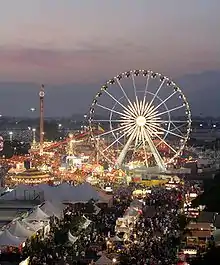
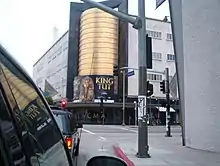
The county's most visited park is Griffith Park, owned by the city of Los Angeles. The county is also known for the annual Rose Parade in Pasadena, the annual Los Angeles County Fair in Pomona, the Los Angeles County Museum of Art, the Los Angeles Zoo, the Natural History Museum of Los Angeles County, the La Brea Tar Pits, the Arboretum of Los Angeles, and two horse racetracks and two car racetracks (Pomona Raceway and Irwindale Speedway), also the RMS Queen Mary located in Long Beach, and the Long Beach Grand Prix, and miles of beaches—from Zuma to Cabrillo.
Venice Beach is a popular attraction whose Muscle Beach used to attract throngs of tourists admiring "hardbodies". Today, it is more arts-centered. Santa Monica's pier is a well known tourist spot, famous for its Ferris wheel and bumper car rides, which were featured in the introductory segment of the television sitcom Three's Company. Further north in Pacific Palisades one finds the beaches used in the television series Baywatch. The fabled Malibu, home of many film and television stars, lies west of it.
In the mountain, canyon, and desert areas one may find Vasquez Rocks Natural Area Park, where many old Westerns were filmed. Mount Wilson Observatory in the San Gabriel Mountains is open for the public to view astronomical stars from its telescope, now computer-assisted. Many county residents find relaxation in water skiing and swimming at Castaic Lake Recreation Area – the county's largest park by area – as well as enjoying natural surroundings and starry nights at Saddleback Butte State Park in the eastern Antelope Valley – California State Parks' largest in area within the county. The California Poppy Reserve is located in the western Antelope Valley and shows off the State's flower in great quantity on its rolling hills every spring.
Museums
- Armory Center for the Arts, Pasadena, California
- Battleship USS Iowa, Los Angeles Waterfront in San Pedro
- SS Lane Victory, Los Angeles Waterfront in San Pedro, just south of the USS Iowa
- California African American Museum
- California Science Center, Los Angeles (formerly the Museum of Science and Industry)
- The Broad
- Hammer Museum
- Huntington Library, San Marino
- Long Beach Museum of Art in the historic Elizabeth Milbank Anderson residence
- Los Angeles Children's Museum
- Los Angeles County Fire Museum, in Bellflower[66]
- Los Angeles County Museum of Art, Mid-City, Los Angeles
- Museum of Contemporary Art, Downtown Los Angeles (founded in 1950); The Geffen Contemporary at MOCA, Downtown Los Angeles (founded in 1980)
- Museum of Jurassic Technology, Culver City
- Museum of Latin American Art in Long Beach
- Museum of Neon Art
- Museum of the American West (Gene Autry Museum), in Griffith Park
- Museum of Tolerance
- Natural History Museum of Los Angeles County
- Pasadena Museum of California Art, in Pasadena
- J. Paul Getty Center, Brentwood (Ancient Roman, Greek, and European Renaissance Art)
- J. Paul Getty Villa, Pacific Palisades, Getty's original house
- George C. Page Museum at La Brea Tar Pits
- Santa Monica Museum of Art, Santa Monica (Contemporary art)
- Norton Simon Museum, Pasadena (19th- and early 20th-century art)
- Skirball Cultural Center, Los Angeles
- Southwest Museum
Entertainment
- Pacific Park
- Six Flags Magic Mountain
- Raging Waters
- Six Flags Hurricane Harbor
- Universal Studios Hollywood
- Los Angeles Memorial Coliseum
- Descanso Gardens
- Dodger Stadium
- Exposition Park
- Farmers Market
- The Forum
- Griffith Park
- Griffith Observatory
- Huntington Botanical Gardens
- La Brea Tar Pits
- Music Center
- Olvera Street
- Staples Center
- SoFi Stadium
- South Coast Botanic Garden
- Third Street Promenade
- Venice Beach
- Los Angeles Zoo
Music venues
- California Plaza, comprising One California Plaza and Two California Plaza
- Cerritos Center for the Performing Arts
- The Forum
- Disney Concert Hall
- Greek Theatre
- House of Blues Sunset Strip
- Pantages Theatre
- Hollywood Bowl
- Hollywood Palladium
- John Anson Ford Amphitheatre
- The Orpheum Theatre
- The Roxy Theatre
- Royce Hall (UCLA)
- The Music Box
- El Rey Theatre
- Staples Center
- The Troubadour
- The Wiltern
- Whisky a Go Go
Amusement parks
- Universal Studios Hollywood
- Six Flags Raging Waters
- Six Flags Magic Mountain
- Six Flags Hurricane Harbor
- Pacific Park
Other attractions
Other areas
- Ridge Route
- Angeles National Forest
- Mount Wilson Observatory
- Malibu Creek State Park
- Vasquez Rocks Natural Area Park
- Plant 42's Blackbird Airpark and Heritage Airpark
- Antelope Valley California Poppy Reserve
- Cortes Bank
- Santa Catalina Island
- Mojave Desert
- Saddleback Butte State Park
- Antelope Valley Indian Museum State Historic Park
- Arthur B. Ripley Desert Woodland State Park
Transportation
Major highways
Air
Los Angeles International Airport (LAX), located in the Westchester district, is the primary commercial airport for commercial airlines in the county and the Greater Los Angeles Area. LAX is operated by Los Angeles World Airports (LAWA), an agency of the City of Los Angeles.
Other important commercial airports in Los Angeles County include:
- Long Beach Municipal Airport operated by the City of Long Beach.
- Bob Hope Airport in Burbank, operated by the Burbank-Glendale-Pasadena Airport Authority.
The following general aviation airports also are located in Los Angeles County:
- County operated airports (Department of Public Works, Aviation Division)
- City operated airports
- Van Nuys Airport in Van Nuys, also operated by LAWA. Van Nuys Airport sees significant executive jet air traffic.
- LA/Palmdale Regional Airport in Palmdale. The airport is a separate facility on the grounds of Air Force Plant 42.
- Santa Monica Airport in Santa Monica, which has major executive jet traffic.
- Hawthorne Municipal Airport, also known as Jack Northrop Field, in Hawthorne.
- Zamperini Field in Torrance.
The U.S. Air Force operates three airports in Los Angeles County:
- Portions of Edwards Air Force Base, located at the northern edge of the county.
- Air Force Plant 42 in Palmdale, sharing runways with LA/Palmdale Regional.
- The non-flying Los Angeles Air Force Base in El Segundo.
Rail
Los Angeles is a major freight-railroad transportation center, largely due to the large volumes of freight moving in and out of the county's sea port facilities. The ports are connected to the downtown rail yards and to the main lines of Union Pacific and Burlington Northern Santa Fe headed east via a grade-separated, freight rail corridor known as the Alameda Corridor.
Passenger rail service is provided in the county by Amtrak, Los Angeles Metro Rail and Metrolink.
Amtrak has the following intercity Amtrak service at Union Station in the city of Los Angeles:
- The Pacific Surfliner to Santa Barbara, San Luis Obispo, and San Diego.
- The Coast Starlight to Seattle.
- The Southwest Chief to Chicago.
- The Sunset Limited to New Orleans and Orlando.
Union Station is also the primary hub for Metrolink commuter rail, which serves much of the Greater Los Angeles Area.
Light rail, subway (heavy rail), and long-distance bus service are all provided by the Los Angeles County Metropolitan Transportation Authority (Metro).
Sea
The county's two main seaports are the Port of Los Angeles and the Port of Long Beach. Together they handle over a quarter of all container traffic entering the United States, making the complex the largest and most important port in the country, and the third-largest port in the world by shipping volume.
The Port of Los Angeles is the largest cruise ship center on the West Coast, handling more than 1 million passengers annually.
The Port of Long Beach is home to the Sea Launch program, which uses a floating launch platform to insert payloads into orbits that would be difficult to attain from existing land-based launch sites.
Ferries link the Catalina Island city of Avalon to the mainland.
Communities
Cities
There are 88 incorporated cities in Los Angeles County. According to the 2018 Estimate, the most populous are:[67]
| City | Population |
|---|---|
| Los Angeles | 3,990,456 |
| Long Beach | 467,354 |
| Santa Clarita | 210,089 |
| Glendale | 201,361 |
| Lancaster | 159,053 |
| Palmdale | 156,667 |
| Pomona | 152,361 |
| Torrance | 145,182 |
| Pasadena | 141,371 |
| El Monte | 115,586 |
| Downey | 112,269 |
| West Covina | 106,311 |
| Norwalk | 105,120 |
| Burbank | 103,695 |
Census designated places
- Acton
- Agua Dulce
- Alondra Park
- Altadena
- Avocado Heights
- Castaic
- Charter Oak
- Citrus
- Del Aire
- Desert View Highlands
- East Los Angeles
- East Pasadena
- East Rancho Dominguez
- East San Gabriel
- East Whittier
- Elizabeth Lake
- Florence-Graham
- Green Valley
- Hacienda Heights
- Hasley Canyon
- La Crescenta-Montrose
- Ladera Heights
- Lake Hughes
- Lake Los Angeles
- Lennox
- Leona Valley
- Littlerock
- Marina del Rey
- Mayflower Village
- North El Monte
- Quartz Hill
- Rose Hills
- Rowland Heights
- San Pasqual
- South Monrovia Island
- South San Gabriel
- South San Jose Hills
- South Whittier
- Stevenson Ranch
- Sun Village
- Topanga
- Val Verde
- Valinda
- View Park-Windsor Hills
- Vincent
- Walnut Park
- West Athens
- West Carson
- West Rancho Dominguez
- West Puente Valley
- West Whittier-Los Nietos
- Westmont
- Willowbrook
Unincorporated Communities
- Agoura
- Alla
- Alpine
- Andrade Corner
- Antelope Acres
- Antelope Center
- Athens
- Bassett
- Big Pines
- Castaic Junction
- City Terrace
- Cornell
- Del Sur
- Del Valle
- Firestone Park
- Florence
- Gorman
- Hillgrove
- Hi Vista
- Indian Springs
- Juniper Hills
- Kagel Canyon
- Kinneloa Mesa
- Largo Vista
- Llano
- Los Nietos
- Malibu Vista
- Monte Nido
- Neenach
- Ninetynine Oaks
- Pearblossom
- Rancho Dominguez
- Sandberg
- Sand Canyon
- Seminole Hot Springs
- Three Points
- Two Harbors
- Universal City
- Valyermo
- West Whitter
Proposed Communities
- Centennial (planned for 70,000).[68]
Population ranking
The population ranking of the following table is based on the 2010 census of Los Angeles County.[69]
† county seat
| Rank | City/Town/etc. | Municipal type | Population (2010 Census) |
|---|---|---|---|
| 1 | † Los Angeles | City | 3,792,621 |
| 2 | Long Beach | City | 462,257 |
| 3 | Glendale | City | 191,719 |
| 4 | Santa Clarita | City | 176,320 |
| 5 | Lancaster | City | 156,633 |
| 6 | Palmdale | City | 152,750 |
| 7 | Pomona | City | 149,058 |
| 8 | Torrance | City | 145,438 |
| 9 | Pasadena | City | 137,122 |
| 10 | East Los Angeles | CDP | 126,496 |
| 11 | El Monte | City | 113,475 |
| 12 | Downey | City | 111,772 |
| 13 | Inglewood | City | 109,673 |
| 14 | West Covina | City | 106,098 |
| 15 | Norwalk | City | 105,549 |
| 16 | Burbank | City | 103,340 |
| 17 | Compton | City | 96,455 |
| 18 | South Gate | City | 94,396 |
| 19 | Carson | City | 91,714 |
| 20 | Santa Monica | City | 89,736 |
| 21 | Whittier | City | 85,331 |
| 22 | Hawthorne | City | 84,293 |
| 23 | Alhambra | City | 83,089 |
| 24 | Lakewood | City | 80,048 |
| 25 | Bellflower | City | 76,616 |
| 26 | Baldwin Park | City | 75,390 |
| 27 | Lynwood | City | 69,772 |
| 28 | Redondo Beach | City | 66,748 |
| 29 | Florence-Graham | CDP | 63,387 |
| 30 | Pico Rivera | City | 62,942 |
| 31 | Montebello | City | 62,500 |
| 32 | Monterey Park | City | 60,269 |
| 33 | Gardena | City | 58,829 |
| 34 | Huntington Park | City | 58,114 |
| 35 | South Whittier | CDP | 57,156 |
| 36 | Arcadia | City | 56,364 |
| 37 | Diamond Bar | City | 55,544 |
| 38 | Paramount | City | 54,098 |
| 39 | Hacienda Heights | CDP | 54,038 |
| 40 | Rosemead | City | 53,764 |
| 41 | Glendora | City | 50,073 |
| 42 | Cerritos | City | 49,041 |
| 43 | Rowland Heights | CDP | 48,993 |
| 44 | La Mirada | City | 48,527 |
| 45 | Covina | City | 47,796 |
| 46 | Azusa | City | 46,361 |
| 47 | Altadena | CDP | 42,777 |
| 48 | Bell Gardens | City | 42,072 |
| 49 | Rancho Palos Verdes | City | 41,643 |
| 50 | La Puente | City | 39,816 |
| 51 | San Gabriel | City | 39,718 |
| 52 | Culver City | City | 38,883 |
| 53 | Monrovia | City | 36,590 |
| 54 | Willowbrook | CDP | 35,983 |
| 55 | Temple City | City | 35,558 |
| 56 | Bell | City | 35,477 |
| 57 | Manhattan Beach | City | 35,135 |
| 58 | Claremont | City | 34,926 |
| 59 | West Hollywood | City | 34,399 |
| 60 | Beverly Hills | City | 34,109 |
| 61 | San Dimas | City | 33,371 |
| 62 | Lawndale | City | 32,769 |
| 63 | Westmont | CDP | 31,853 |
| 64 | La Verne | City | 31,063 |
| 65 | Walnut | City | 29,172 |
| 66 | Maywood | City | 27,395 |
| 67 | South Pasadena | City | 25,619 |
| 68 | West Whittier-Los Nietos | CDP | 25,540 |
| 69 | Cudahy | City | 23,805 |
| 70 | San Fernando | City | 23,645 |
| 71 | Calabasas | City | 23,058 |
| 72 | Valinda | CDP | 22,822 |
| 73 | Lennox | CDP | 22,753 |
| 74 | West Puente Valley | CDP | 22,636 |
| 75 | West Carson | CDP | 21,699 |
| 76 | Duarte | City | 21,321 |
| 77 | South San Jose Hills | CDP | 20,551 |
| 78 | Agoura Hills | City | 20,330 |
| 79 | Lomita | City | 20,256 |
| 80 | La Cañada Flintridge | City | 20,246 |
| 81 | South El Monte | City | 20,116 |
| 82 | La Crescenta-Montrose | CDP | 19,653 |
| 83 | Hermosa Beach | City | 19,506 |
| 84 | Castaic | CDP | 19,015 |
| 85 | Stevenson Ranch | CDP | 17,557 |
| 86 | El Segundo | City | 16,654 |
| 87 | Artesia | City | 16,522 |
| 88 | Santa Fe Springs | City | 16,223 |
| 89 | Walnut Park | CDP | 15,966 |
| 90 | Vincent | CDP | 15,922 |
| 91 | Avocado Heights | CDP | 15,411 |
| 92 | East Rancho Dominguez | CDP | 15,135 |
| 93 | East San Gabriel | CDP | 14,874 |
| 94 | Hawaiian Gardens | City | 14,254 |
| 95 | Palos Verdes Estates | City | 13,438 |
| 96 | San Marino | City | 13,147 |
| 97 | Commerce | City | 12,823 |
| 98 | Malibu | City | 12,645 |
| 99 | Lake Los Angeles | CDP | 12,328 |
| 100 | Sun Village | CDP | 11,565 |
| 101 | View Park-Windsor Hills | CDP | 11,075 |
| 102 | Signal Hill | City | 11,016 |
| 103 | Sierra Madre | City | 10,917 |
| 104 | Quartz Hill | CDP | 10,912 |
| 105 | Citrus | CDP | 10,866 |
| 106 | Del Aire | CDP | 10,001 |
| 107 | East Whittier (formerly East La Mirada until 2012) | CDP | 9,757 |
| 108 | Charter Oak | CDP | 9,310 |
| 109 | Marina del Rey | CDP | 8,866 |
| 110 | West Athens | CDP | 8,729 |
| 111 | Alondra Park | CDP | 8,592 |
| 112 | Topanga | CDP | 8,289 |
| 113 | Westlake Village | City | 8,270 |
| 114 | South San Gabriel | CDP | 8,070 |
| 115 | Rolling Hills Estates | City | 8,067 |
| 116 | Acton | CDP | 7,596 |
| 117 | South Monrovia Island | CDP | 6,777 |
| 118 | Ladera Heights | CDP | 6,498 |
| 119 | East Pasadena | CDP | 6,144 |
| 120 | West Rancho Dominguez | CDP | 5,669 |
| 121 | Mayflower Village | CDP | 5,515 |
| 122 | La Habra Heights | City | 5,325 |
| 123 | Avalon | City | 3,728 |
| 124 | North El Monte | CDP | 3,723 |
| 125 | Agua Dulce | CDP | 3,342 |
| 126 | Rose Hills | CDP | 2,803 |
| 127 | Val Verde | CDP | 2,468 |
| 128 | Desert View Highlands | CDP | 2,360 |
| 129 | San Pasqual | CDP | 2,041 |
| 130 | Rolling Hills | City | 1,860 |
| 131 | Hidden Hills | City | 1,856 |
| 132 | Elizabeth Lake | CDP | 1,756 |
| 133 | Leona Valley | CDP | 1,607 |
| 134 | Irwindale | City | 1,422 |
| 135 | Littlerock | CDP | 1,377 |
| 136 | Hasley Canyon | CDP | 1,137 |
| 137 | Bradbury | City | 1,048 |
| 138 | Green Valley | CDP | 1,027 |
| 139 | Lake Hughes | CDP | 649 |
| 140 | Industry | City | 219 |
| 141 | Vernon | City | 112 |
See also
Notes
- Percentage of registered voters with respect to total population. Percentages of party members with respect to registered voters follow.
- Only larceny-theft cases involving property over $400 in value are reported as property crimes.
References
- "Chronology". California State Association of Counties. Archived from the original on January 29, 2016. Retrieved February 6, 2015.
- "Board of Supervisors". County of Los Angeles. Archived from the original on February 6, 2015. Retrieved December 1, 2014.
- Mount San Antonio in the San Gabriel Mountains, on border with San Bernardino County.
- Sea level at the Pacific Ocean.
- "U.S. Census website". Archived from the original on December 27, 1996. Retrieved May 7, 2019.
- "Archived copy" (PDF). Archived from the original (PDF) on October 20, 2019. Retrieved September 12, 2019.CS1 maint: archived copy as title (link)
- "Gross Domestic Product by County, 2019" (PDF). bea.gov. Retrieved December 27, 2018.
- "Los Angeles County". lacounty.gov.
- "Largest counties in the U.S. 2018, by population – Statistic". Statista. Archived from the original on March 27, 2019. Retrieved December 27, 2018.
- "QuickFacts: Los Angeles County, California; UNITED STATES". U.S. Census Bureau. Archived from the original on September 22, 2018. Retrieved January 21, 2018.
- Galperin, Ron. "The GOP's tax plan is terrible for Los Angeles". Los Angeles Times. Archived from the original on March 27, 2019. Retrieved April 16, 2020.
- "Newsroom: Population: Census Bureau Releases State and County Data Depicting Nation's Population Ahead of 2010 Census". Census.gov. Archived from the original on August 24, 2012. Retrieved August 23, 2012.
- Coy, Owen C.; Ph.D. (1923). California County Boundaries. Berkeley: California Historical Commission. p. 140. ASIN B000GRBCXG.
- "State and County Maps of California". Archived from the original on July 2, 2018. Retrieved July 2, 2018.
- Paul R. Spitzzeri (Fall 2007). "What a Difference a Decade Makes: Ethnic and Racial Demographic Change in Los Angeles County during the 1860s" (PDF). Branding Iron.
- U.S. Census Bureau. "Population of the United States in 1860: California" (PDF).
- Paul R. Spitzzeri (Fall 2007). "What a Difference a Decade Makes: Ethnic and Racial Demographic Change in Los Angeles County during the 1860s" (PDF). Branding Iron. Archived (PDF) from the original on February 4, 2019. Retrieved February 3, 2019.
- "2010 Census Gazetteer Files". United States Census Bureau. August 22, 2012. Archived from the original on September 25, 2015. Retrieved September 26, 2015.
- "U.S. Census Bureau QuickFacts: Los Angeles County, California; United States". www.census.gov. Retrieved January 28, 2021.
- "Estimates of the Components of Resident Population Change for the United States, Regions, States, and Puerto Rico: July 1, 2018 to July 1, 2019".
- "Los Angeles County, California". State & County QuickFacts. U.S. Census Bureau. Archived from the original on July 3, 2011. Retrieved December 18, 2011.
- "2010 Census P.L. 94-171 Summary File Data". United States Census Bureau.
- Trinidad, Elson (September 27, 2013). "L.A. County is the Capital of Asian America". KCET. Archived from the original on April 3, 2014. Retrieved September 27, 2013.
- "U.S. Decennial Census". United States Census Bureau. Archived from the original on April 26, 2015. Retrieved September 26, 2015.
- "Historical Census Browser". University of Virginia Library. Archived from the original on May 30, 2019. Retrieved September 26, 2015.
- Forstall, Richard L., ed. (March 27, 1995). "Population of Counties by Decennial Census: 1900 to 1990". United States Census Bureau. Archived from the original on September 24, 2015. Retrieved September 26, 2015.
- "Census 2000 PHC-T-4. Ranking Tables for Counties: 1990 and 2000" (PDF). United States Census Bureau. April 2, 2001. Archived (PDF) from the original on December 18, 2014. Retrieved September 26, 2015.
- "State & County QuickFacts". United States Census Bureau. Archived from the original on July 3, 2011. Retrieved April 4, 2016.
- U.S. Census Bureau. American Community Survey, 2011 American Community Survey 5-Year Estimates, Table B02001. U.S. Census website Archived December 27, 1996, at the Wayback Machine. Retrieved October 26, 2013.
- U.S. Census Bureau. American Community Survey, 2011 American Community Survey 5-Year Estimates, Table B03003. U.S. Census website Archived December 27, 1996, at the Wayback Machine. Retrieved October 26, 2013.
- U.S. Census Bureau. American Community Survey, 2011 American Community Survey 5-Year Estimates, Table B19301. U.S. Census website Archived December 27, 1996, at the Wayback Machine. Retrieved October 21, 2013.
- U.S. Census Bureau. American Community Survey, 2011 American Community Survey 5-Year Estimates, Table B19013. U.S. Census website Archived December 27, 1996, at the Wayback Machine. Retrieved October 21, 2013.
- U.S. Census Bureau. American Community Survey, 2011 American Community Survey 5-Year Estimates, Table B19113. U.S. Census website Archived December 27, 1996, at the Wayback Machine. Retrieved October 21, 2013.
- This included over 65,000 Arabs and 75,000 Iranian, who many people would not count as White. See "2000 Census fact sheet table". Census.gov. Archived from the original on December 27, 1996. Retrieved June 16, 2017.. For a clear discussion of Arabs being counted as white, see Overview of Race and Hispanic Origin Archived February 12, 2020, at Archive.today, 2000 Census.
- "Language Map Data Center". Mla.org. July 17, 2007. Archived from the original on February 20, 2013. Retrieved August 23, 2012.
- Johnson, Hans; Hill, Laura (July 2011). "Illegal Immigration" (PDF). Publications. Public Policy Institute of California. Archived (PDF) from the original on January 17, 2013. Retrieved January 15, 2013.
- https://www.lamag.com/citythinkblog/armenian-genocide/
- "U.S. Census website". United States Census Bureau. Archived from the original on December 27, 1996. Retrieved May 14, 2011.
- Kristen Lewis and Sarah Burd-Sharps, A Portrait of Los Angeles County: Los Angeles County Human Development Report 2017–2018 Archived February 28, 2018, at the Wayback Machine. Measure of America of the Social Science Research Council.
- Frank, Robert (May 5, 2008). "California Boasts Most Millionaires". The Wall Street Journal. Archived from the original on January 19, 2012. Retrieved September 29, 2011.
- Nagourney, Adam (December 12, 2010). "Los Angeles Confronts Homelessness Reputation". New York Times. Archived from the original on December 13, 2010. Retrieved December 14, 2010.
- Segal, Elizabeth; Emerling, Jennifer (May 9, 2018). "A Haven for the Homeless". U.S. New & World Report. Archived from the original on May 10, 2018. Retrieved May 9, 2018.
- "Los Angeles County". crcc.usc.edu. Retrieved October 9, 2020.
- Selected Non-Christian Religious Traditions in Los Angeles County: 2000 Prolades.com Archived August 26, 2010, at the Wayback Machine
- "Social Capital Variables Spreadsheet for 2014". PennState College of Agricultural Sciences, Northeast Regional Center for Rural Development. December 8, 2017. Archived from the original on December 31, 2019. Retrieved December 30, 2019.
- California Government Code § 23004
- Sachi A. Hamai, Transmittal Letter, Fiscal 2020–21 Recommended County Budget, April 28, 2020, 2.
- David Leip. "Dave Leip's Atlas of U.S. Presidential Elections". Uselectionatlas.org. Archived from the original on July 9, 2018. Retrieved January 21, 2018.
- Thompson and West. "Los Angeles County Election Results, 1849-1879: L.A. County Rejects Lincoln (Twice) & Chinese Immigration". SCVHistory.com. Retrieved January 16, 2021.
- California Secretary of State. February 10, 2013 – Report of Registration. Retrieved October 31, 2013. Archived July 27, 2013, at the Wayback Machine
- "Counties by County and by District". California Citizens Redistricting Commission. Archived from the original on September 30, 2013. Retrieved September 24, 2014.
- "Communities of Interest — County". California Citizens Redistricting Commission. Archived from the original on October 23, 2015. Retrieved September 28, 2014.
- "Communities of Interest — County". California Citizens Redistricting Commission. Archived from the original on October 23, 2015. Retrieved September 28, 2014.
- "Statement of Vote: 2008 General Election" Archived October 18, 2012, at the Wayback Machine
- A look at your Superior Court, Public Information Office, Los Angeles Superior Court
- "LA Court". lasuperiorcourt.org. Archived from the original on February 19, 2009.
- Office of the Attorney General, Department of Justice, State of California. Table 11: Crimes – 2009. Retrieved November 14, 2013. Archived December 2, 2013, at the Wayback Machine
- United States Department of Justice, Federal Bureau of Investigation. Crime in the United States, 2012, Table 8 (California) Archived June 28, 2016, at the Wayback Machine. Retrieved November 14, 2013.
- Kator, Zabi. "Is Security in Los Angeles getting better or worse". guardNOW Security Services. guardNOW Security Services. Archived from the original on April 23, 2014. Retrieved August 28, 2013.
- Kator, Zabi. "Los Angeles Security & Crime Statistics". guardNOW Security Services. guardNOW Security Services. Archived from the original on April 23, 2014. Retrieved August 28, 2013.
- T, Stephen (January 1, 2018). "What Drives the Economy of Los Angeles?". Muse Treatment. Retrieved January 28, 2021.
- Lawren (October 6, 2014). "LA Tech Report examines the regional high tech ecosystem". Los Angeles County Economic Development Corporation. Archived from the original on November 10, 2016. Retrieved November 9, 2016.
- Lawren (July 15, 2014). "Manufacturing employment & competitiveness in CA – New LAEDC report". Los Angeles County Economic Development Corporation. Archived from the original on November 10, 2016. Retrieved November 9, 2016.
- ROOSEVELT, MARGOT (July 19, 2014). "Despite losses, California leads nation in factory jobs". Orange County Register. Retrieved January 28, 2021.
- Encyclopedia.com Archived January 18, 2012, at the Wayback Machine, "Dole gets ready to turn first shovel of headquarters dirt: plans are set to go to Westlake Village City Council". (Dole Food Co. Inc. Los Angeles Business Journal. January 31, 1994. Retrieved on September 27, 2009.
- "Home, LOS ANGELES FIRE DEPARTMENT MUSEUM". LOS ANGELES FIRE DEPARTMENT MUSEUM. Archived from the original on January 7, 2017. Retrieved January 11, 2017.
- "U.S. Census website". United States Census Bureau. US Census Bureau. Archived from the original on December 27, 1996. Retrieved November 3, 2019.
- Jon Gertner (March 18, 2007). "Playing Sim City for Real". The New York Times. New York Times Magazine. Archived from the original on June 21, 2018. Retrieved January 21, 2018.
- "Decennial Census by Decades". Archived from the original on May 22, 2017. Retrieved May 25, 2014.
External links
| Wikimedia Commons has media related to Los Angeles County, California. |
| Wikisource has the text of an 1879 American Cyclopædia article about Los Angeles County, California. |

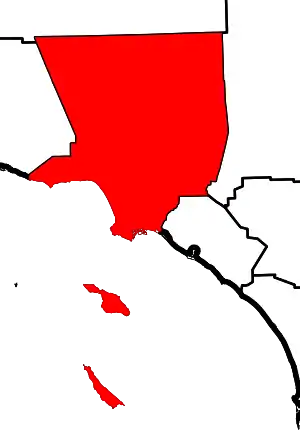
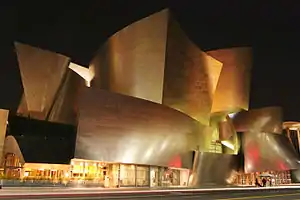

.jpg.webp)

